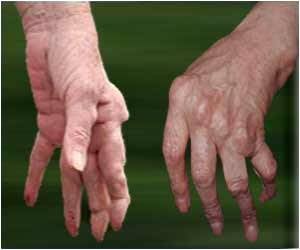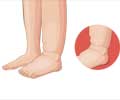Physiotherapy for ankle sprain could be a waste of time and expense according to experts.

‘There is potential for the investigation of alternative interventions that would reduce morbidity in patients with these injuries.’





The research, published in The BMJ, found that for simple sprainsphysiotherapy did not lead to "clinically important improvements" after six months compared to self care.Ankle sprains are one of the most common musculoskeletal injuries, the researchers said, and many people return to hospital time after time.
Most ankle sprains are simple ligament sprains - for which physiotherapy is not proven to work, they said.
Canadian researchers tracked 503 patients aged 19 to 79 years with mild or moderate ankle sprain injuries presenting at emergency departments of two hospitals in Kingston, Canada.
Half of patients were given a series of seven physiotherapy sessions, lasting half an hour each.
Advertisement
The participants, were interviewed at one month, three months and six months.
Advertisement
The researchers, from Queen’s University in Kingston, found that 43% of those who underwent physiotherapy and 38% who simply rested not fully recovered after six months.
The authors wrote: ‘Our trial is the largest randomized controlled trial to have evaluated the therapeutic benefits of supervised physiotherapy in the treatment of acute ankle sprains. We conclude ... the addition of early supervised physiotherapy to usual care does not lead to clinically important improvements in functional recovery.’
The finding is clinically important as the recommendation of physiotherapy for the management of acute ankle sprains comes with substantial economic costs.
The authors said alternative treatments should be investigated, rather than simply ploughing on with a treatment that does not work.
In a linked editorial, Chris Bleakley from Ulster University called for patients, practitioners and researchers to consider other rehabilitative exercises that can influence treatment success.
But he said the maximum of seven lots of 30 minutes of supervised physiotherapy in the study might be too low.
A major investigation into the keyhole knee operations carried out on thousands of middle-aged people earlier this year reported that they often do not benefit the patient.
And a study of patients who had undergone hip replacements reported last month that they did not improve mobility.
For decades doctors have attempted to come up with more and more treatments for orthopedic problems.
But a growing body of evidence suggests many treatments are of no measurable benefit – and some actually do more harm than good.
Source-Medindia















